How to drain the water from the boiler - step by step instructions
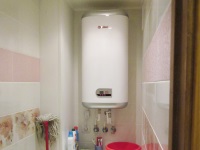
To provide an apartment or house with hot water, often install a boiler. The service life of the heater is largely influenced by the tap water. If its hardness is high and there are many contaminating additives, the inside of the boiler will be covered with limescale. The prevention of breakdown due to excessive scale buildup is to clean the inside of the boiler. By draining the water at least once a year, you will prevent contamination of the appliance and excessive scale buildup.
Also, draining the water from the boiler is performed in the case when the house will not be used for the winter time, and the water inside the water supply system can freeze. An experienced professional knows how to competently and quickly drain the water from the heating device. But is it possible to perform such a procedure yourself? Yes, if you understand the process in more detail.
Cases when it is necessary to drain the water
- Often draining the water from the boiler is carried out if the device is to be repaired or cleaned. Freed from water, the device weighs much less, so it will be easier to dismantle. Any repair work on water heaters is carried out only with dry tanks, so if you have to dismantle the heating element or sensors, the water is also necessarily drained.
- Also, in addition to the task of cleaning the heating element and the inside of the tank, the water is drained in the case of irregular use of the device. For example, when the boiler is in a country house, where the owners come only on summer vacations or weekends, and in winter the unit will stay in unheated conditions. In this example, the water is necessarily drained, because there is a risk that during the idle boiler ambient temperature will be below +5 degrees, that is, the coolant risks freezing, which could cause the rupture of the tank.
- Also the need to drain the water is often motivated by the appearance of unpleasant odor of water coming from the device. This odor can be caused by long periods of downtime when the boiler is full of water, or by water supply interruptions when contaminated water with a lot of impurities gets into the pipes.
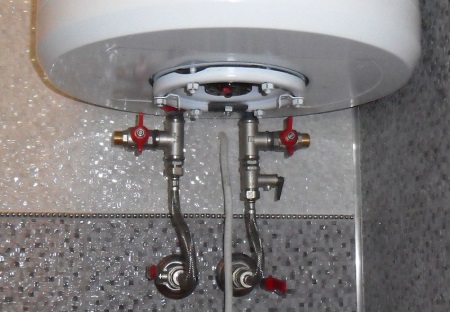
Cases where water should not be drained
Let's look at the cases when you should not drain the water from the boiler:
- If you need to turn off the boiler for a period of time, but there will be no low temperatures during downtime, you should not drain the water from the unit. Leaving water in the tank will protect the heater from early corrosion. In addition, if you forget to turn on the empty unit after you return, you risk causing a fire.
- When the water heater was turned off for a certain time, and inside the stale water has become stale and with an unpleasant odor, there is no special need to drain it. To refresh the water, you only need to fill the boiler a few times again. Such "rinses" of the tank are recommended on a regular basis, running approximately 100 liters of cold water through the device every 2-3 months.
- Do not drain the water yourself if the unit is still under warranty. If you soon need to go to the service for repair or maintenance, the warranty will be considered invalid, as soon as traces of your own actions on the boiler will be detected. If you need to drain the water to fix the breakdown, it is better to call a master immediately. Arriving at your home, the specialists will do everything necessary themselves.
It is also not recommended to drain the water from the heater for nothing. If you just want to see the tank from the inside without any particular need, to conduct a "training" for the future or to empty the device unscheduled, it is better to refrain. With household appliances manipulation should be carried out only for a specific purpose.
Necessary tools
To carry out the procedure for draining water from the boiler, you need to use:
- with an adjustable wrench or ring spanner;
- Drainage hose;
- screwdriver (Phillips and regular screwdriver)
- hexagon socket.
The wrench should be chosen taking into account the nuts that hold the valves.
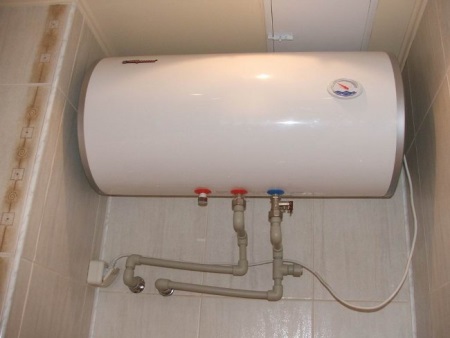
Step by step instruction
Since the boiler is a high-pressure appliance, to drain the water is not enough to stop the cold water supply and open the hot water tap. You'll immediately understand why when you see how the water heater works.
Look at the water heater, and you will notice that there are two tubes connected to the device:
- One of them (usually on the right) is the spigot through which water enters. Since cold water runs through it, this tube is usually marked in blue. It has a safety valve with a valve on it that allows you to change the water pressure and also prevents heated water from flowing back into the water mains.
- Through the second connection, usually marked in red, the heated water flows from the unit to the mixer . If the safety valve on the inlet pipe is not closed, simultaneously with the hot water supply to the faucet, the cold water fills the tank again. That is why it is imperative that the cold water supply is shut off to drain the water.
Your first important action should be to disconnect the device from the power grid. Any appliances are repaired only after a complete power outage - this is an important rule. When you shut off the electricity, the heating element will stop its work and the water will gradually cool down. You can not drain the boiling water, so it is best to unplug the unit in the evening, planning to drain the water in the morning, when the water temperature will be safe.
In the morning, after shutting off the water supply at the safety valve (so you will not let the water back into the tank), open the hot water at the faucet and wait until the heater tank is empty. The hot water valve on the faucet should remain open until the water stops flowing.
The next step is to connect a hose to the unit, that will carry the water to the sewer. This hose must be connected to the drain connection. Some models do not have such a branch pipe, then during their connection a tee is mounted over the protective valve of the cold pipe. In this tee, one of the outlets is used to mount a valve with a regular valve or drain connection. This tap is opened at the end of the drain to get rid of the last residual water.
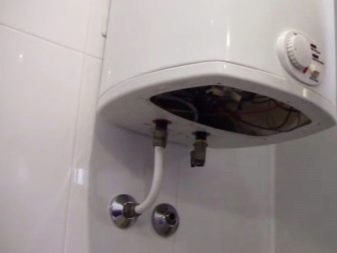
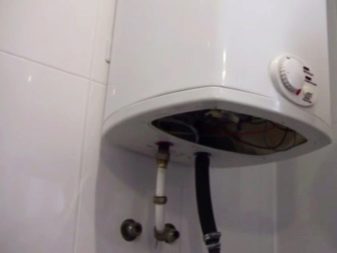
How to drain the water if the boiler is still under warranty
If the warranty on the appliance has not yet expired, you can not drain the water in case of a breakdown with your own hands.
You should contact the company that sold you the boiler and installed the device in your home.
To avoid difficulties in determining who is responsible for warranty repair, it is better to order the installation of the boiler in the same company in which the device is purchased.
In any case, in order to routinely clean or repair the water heater under warranty, call the professionals who installed the boiler. Water drain and repair work is done at the place of installation.
Called specialists inspect the device (whether it is physically damaged) and fix the breakdown. If the work requires dismantling the heater and draining the water, this will be done by craftsmen, and you can drain the appliance yourself only when the warranty period is over. However, do not forget to shut off the valve to stop the cold water supply to the device, as well as disconnect the device from the mains before the visit of repairmen.
How to get rid of unpleasant water odor
This odor is caused by hydrogen sulfide, which can get inside the boiler with water from the common water supply system. Also unpleasant smell acquires water, staying in the boiler for a long time when it was not used, for example, if the owners were away. Another reason can be called the desire of the owners of the heater to save money, when they reduce the temperature of heating. The device heats water to 35-45 degrees, but this temperature regime contributes to the development of microorganisms in the water, which release hydrogen sulfide.
To get rid of water that has stagnated, to perform its drainage from the device is not necessary, just fill the boiler several times with new cold water.
When the water coming to you has harmful impurities, it is recommended to empty the boiler at any downtime, and after filling it again, turn on the maximum temperature mode.
You can also treat the walls of the heater with 9% table vinegar to get rid of the unpleasant odor coming from the water heater. Completely drain the water from the device and place the heating element in the vinegar.
Don't forget your protection - use gloves, goggles and long-sleeved clothing.
Connecting a washcloth to a long stick, soak it in vinegar and wipe the walls of the tank from the inside several times. After half an hour, carry out the same manipulation, only treat the walls not with vinegar, but with cold water.
Tips for proper operation of the boiler
To make your boiler happy for a long time, follow a number of simple rules:
- Any manipulation should be carried out only after disconnecting the boiler from the mains.
- If you are going to discharge the water from the boiler or perform other tasks, study the instructions and recommendations of the manufacturer.
- Make sure that there is water in the tank before turning on the heater.
- Clean the heater regularly, once or twice a year.





Last time we forgot to drain the water from the boiler. And now started using it, but the water there is rotten. The smell was all over the apartment. Creepy. Drain the water after using it.